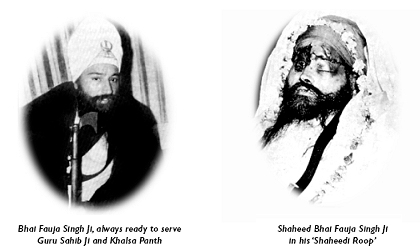

On 17th May 1936 a baby boy was born to a rural family in District Gurdaspur in Punjab.The baby’s father Sardar Surain Singh was a middle-class farmer by trade who, after the formation of Pakistan, took his family and all their belongings to Gazneepur, a small village found on the Gurdaspur Dera Baba Nanak road.
From a young age, Fauja Singh was very popular and would lead the local village boys no matter what game they played. Although he was given Amrit whilst studying at school he did not receive the fruits of Naam, so the spiritual hunger within him did not cease, although his mind remained aloof.This spiritual thirst would not go away. In fact, even at this tender age he displayed a detached state of mind, so much so that he vanished for a whole month. He went to seek spiritual guidance from Sants and Sadhus. Naturally, this caused considerable stress to his parents. Eventually, he returned home.
He went on to pass his exams and although he enrolled in the Khalsa College, Amritsar, his mind remained elsewhere. Unconcerned with day-to-day life, he disappeared again and even though his family looked everywhere, and placed advertisements in the local press, they couldn’t find their carefree son. Meanwhile, Fauja Singh stayed with various holy people at their Deras and meditated on a Mantar. His family finally found him two years later and afterreturning home, he returned to college.
Whilst at college, Bhai Fauja Singh mixed with harmful company. This was to tear him away from Sikhi, but Guru Sahib Ji in his mercy quickly put the young Singh back on the right path. In 1964 he received Amrit at a Smagam organised by the Akhand Kirtani Jatha, where the Panj Pyare brought him into the fold of the Khalsa Order. In Vaisakhi 1965 he married Bibi Amarjit Kaur. Bhai Jeevan Singh Ji performed Kirtan at the occasion.
Bhai Fauja Singh increasingly began to apply his body and mind to the study of Gatka and persuaded other young Sikhs to also study and practise it closely. He was acknowledged as the best Gatka practitioner in the area and there was nobody around who could beat him. Professor Gurmukh Singh, who was well acquainted with Bhai Fauja Singh, felt that there was something special about him, which stood out amongst the Sangat:
“I have been in the Jatha for quite a while now and have been lucky enough to meet many highly spiritual Sikhs of the Guru. Bhai Fauja Singh was different; he had Bir Ras and Naam Ras. Bhai Fauja Singh was always ready to fight against falsehood and stand up for the truth. Some highly spiritual Singhs from the Jatha told him to just meditate.They did not think that in these peaceful times there would be a need for our people to give Shaheedi.The Sikhs gave Shaheedi at the time of the Gurus because the Hindu Rajas, Mughal and Pathan rulers were trying to destroy the Sikh religion. But now the situation was different. Some brothers even joked about his Bir Ras.”
After 1970 Bhai Fauja Singh immersed himself in Sewa. His and his wife’s wages were spent on serving Gursikhs. Bibi Amarjit Kaur told us that sometimes he used to say; “All the money we spend on ourselves is wasted but the money we spend on doing Sewa for the Gursikhs is not wasted and is saved in our bank”. At other times he would say rather ominously; “The tenth Guru formed the Khalsa by shedding his blood.When this plant gets dried-up it needs more blood. Then the Guru`s beloved ones spill their blood to keep the Khalsa flag flying.This cycle repeats itself approximately every fifty years”. He would tell his close companions that there was a lot of disrespect emerging, targeted directly at the heart of the Sikh Dharam. He believed future generations would rightfully ask what their forefathers and mothers were like; who accepted everything so quietly and passively. The spiritual bliss that martyrs get from reading Gurbani verses like: “Purja Purja Kat Marai Kab Hoo Nah Shadai Keth”, only they know. It also seems that the words spoken by Shaheeds are special. Bibi Amarjit Kaur says that during his last six months, Bhai Fauja Singh kept saying to her; “Visualise an image of my dead body. Will you be able to bear it? Be strong and don’t despair.” Bibi Ji realised that one day her husband was destined to give his life for the Panth.
Like all Chardi-Kalaa Gursikhs, Bhai Fauja Singh possessed the precious gifts of honesty, contentment and divine meditation. He ate what he received happily and was never greedy, constantly seeking to live by the Will of Waheguru. Professor Gurmukh Singh believed that even beyond this, Bhai Fauja Singh was extraordinary for many reasons: “I first met Bhai Fauja Singh in 1972 at the Darbar Sahib.He did not know me but said his Fateh to me and met me like we had been old friends.He took me to where he was staying and kept me here for two or three days.
During this first meeting he told me something very secretive, which I am now only sharing with the readers after his Shaheedi. He told me that in his previous life he was in Baba Deep Singh’s Jatha and became Shaheed at Lohgarh. Now, again, he has done Shaheedi for the Khalsa Panth in the holy city of Amritsar near Lohgarh.Those that have seen and met Bhai Fauja Singh all agree that he was filled with the spirit of; ‘Mohai Murnai Ka Chow Hai’. Shakespeare says,“What is in a name?” The name Bhai Fauja Singh given to him by his parents, from the Hukamnama of Guru Granth Sahib Ji, was definitely a true picture of him. Bhai Fauja Singh really was a soldier of the Guru`s army, not only in this, but also his previous life.”
In late 1977 whilst in Gurdaspur Jail, Bhai Fauja Singh wrote a poem under the title of Kurbani. This was probably the only poem written by him because as far as it is known, he was not a poet. It was written about eight months before his Shaheedi and now with hindsight, its underlying theme is worthy of attention. It centres upon the declining state of the Khalsa Panth and the problems facing the Sikh nation. It also serves to relay the emotions of a soul that in its last life shed the mortal frame for the sake of righteousness. How could that soul now have accepted the present day situation, where Guru Sahib Ji was being disrespected openly? This insight goes some way towards explaining why Bhai Fauja Singh who was now forty-two years old found the events taking place in Amritsar absolutely intolerable.
Even before Vaisakhi 1978, Bhai Fauja Singh’s personality showed its true colours when in 1972 after the Misri Bajar incident; Guru Granth Sahib Ji was treated with disrespect. Bhai Fauja Singh was disgusted at the police who were too scared to make the arrest of the criminals involved. It was then that he decided to apprehend the miscreants and after catching them, he punished them accordingly. He was deeply saddened by the fact that our ‘Panthic leaders’ tried to keep the whole incident quiet in case it would lead to some sort of Hindu-Sikh conflict.This political expediency, which sidestepped any notion of love and respect for Guru Sahib Ji, deeply saddened him. He simply could not understand how Sikhs could quietly sit by whilst others insulted and treated Guru Granth Sahib Ji with total disrespect. One question constantly began to etch itself within his mind;‘What has happened to the Khalsa Panth?’
This question arose again on 17th October 1975 when the Sikh Sangat celebrated Sangrand at Gurdwara Bhai Salo Jee. Langar was being served when a gang of thugs came and treated Guru Granth Sahib Ji with disrespect and the assaulted the sewadar and Granthi of the Gurdwara.They even made plans to burn down the Gurdwara Guru Keh Mehal that night.
When Bhai Fauja Singh heard about this incident in the evening he got together some Gursikhs and went there straight away. First they went to see for themselves the disrespectful treatment of Guru Granth Sahib Ji and the damage done to the Gurdwara building. After seeing this, the Gursikhs started chanting Jaikaras and then stood outside, ready to defend the Guru’s House.The thugs soon surrounded them from tall buildings on all four sides, and then started throwing stones, bricks and acid bottles at them. Even though the Gursikh’s clothes and bodies were drenched in blood, they managed to protect the Gurdwara from being burnt down.After 1972, this was the second painful event to have taken place at the Sikh headquarters in Amritsar.The Panthic leaders at that time pretended as if nothing had happened and quite predictably accepted no responsibility.
However, the troublemakers now knew that there were at least a few brave lions amongst the sheep and this was more than enough. After this second incident, Bhai Fauja Singh did not sit quietly at home. In October 1975 Bhai Fauja Singh no longer worked in the office. Referring to the benefits he was receiving, he laughingly said to Professor Gurmukh Singh in 1978 that; “Satguru is having his Sewa done whilst ensuring that I receive my wages from the Punjab Government.”
After the 1975 incident Bhai Fauja Singh co-ordinated a new Gursikhi Parchaar programme. He mentions in his poem that; “the light of faith which seems to be dwindling...” He now decided to rectify this. In 1976 a group of Gursikhs started preaching the Guru’s message in ten villages within Gurdaspur. Professor Gurmukh Singh was amongst this Jatha. Bhai Fauja Singh felt that the Sikhs living in cities were not prepared to sacrifice their lives for their Guru; several previous incidents had proved this. So he now turned his attention to the villages so that perhaps the sleeping Panth, which lay dormant within rural life, could be awakened from its slumber.
The programmes covered Sikh history, Gurbani, Kirtan and also included Amrit Sanchaars. This Jatha would also hold amazing Gatka demonstrations.After Kirtan, Bhai Fauja Singh would often talk to the Sangat and this had a truly inspiring effect upon them.
A Smagam was held in March 1977 over fifteen days at Khalsa Farm, during which Bhai Fauja Singh introduced young Sikhs to Gatka and told them about the problems that the Sikh Panth was facing.There they performed Kirtan and meditated and contemplated on ideas and ways to address various problems affecting the Sikh nation.
It was during this period that a Hindu woman was arrested by the Police. During her interrogation, the Police officers raped her. Her husband unable to stop her from being gangraped went to the magistrates to secure her release; he also filed a formal complaint against the Police. However there was no intervention. By this time point he had become completely exasperated. He then went to various community leaders, including Pundits and Mullahs for help, but none of them wanted to challenge the perpetrators. It was at this point that he decided to approach the Gursikhs.
Various people had told him about one Gursikh called Fauja Singh of Amritsar. Due to his fearless attitude, Bhai Fauja Singh had become quite well known in the region.The aggrieved husband went to see him. Bhai Fauja Singh, along with some Gursikh, went straight to the Police station and upon seeing the pitiable state of the woman, they ensured her immediate release.The guilty police officers were then severely punished. After this incident he was brandished a ‘criminal’ and sent to prison. His actions were reminiscent of our past history, when Gursikhs went on daring and dangerous missions to liberate women from marauding Afghan armies.
However, it wasn’t just invaders and isolated individuals who perpetrated heinous crimes; Bhai Fauja Singh also learnt about those groups who wished to subvert and corrupt the message of our Guru Sahib, which for him was the greatest crime of all. In his poem Kurbani, Bhai Fauja Singh warns the Khalsa Panth about the disrespect shown to Guru Granth Sahib taking place everywhere.The insults directed at Guru Sahib Ji by the Nirankaris inflicted deep wounds upon the hearts of Gursikhs.
At the end of his poem, Bhai Fauja Singh states that; “Whenall else fails, in the hour of need, we will sacrifice our heads at your altar.” Bhai Fauja Singh along with twelve other fearless Gursikhs received the opportunity to honour their promise.
On 13th April 1978, about one hundred and twenty-five Sikhs went to peacefully protest against the Nirankari procession and Nirankari chief Gurbachan Singh’s grievous insults towards Guru Granth Sahib Ji.
We all receive Amrit on the precondition that our head will henceforth belong to Guru Sahib Ji.When the need arises we are expected to lay it down for the sake of righteousness.We hear and read daily in the Ardaas about our forefathers and mothers who gave their lives to protect Dharam and remained committed to the principles of Sikhi until their very last breath.All these events seemed like distant history. Some of us even began to question if such things were possible.The massacre at Amritsar enlivened the memory of those great Shaheeds, and also turned that, which many thought was now myth, into a firm and shocking reality.
(Source: Akhand Kirtani Jatha, UK)


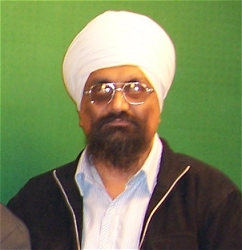
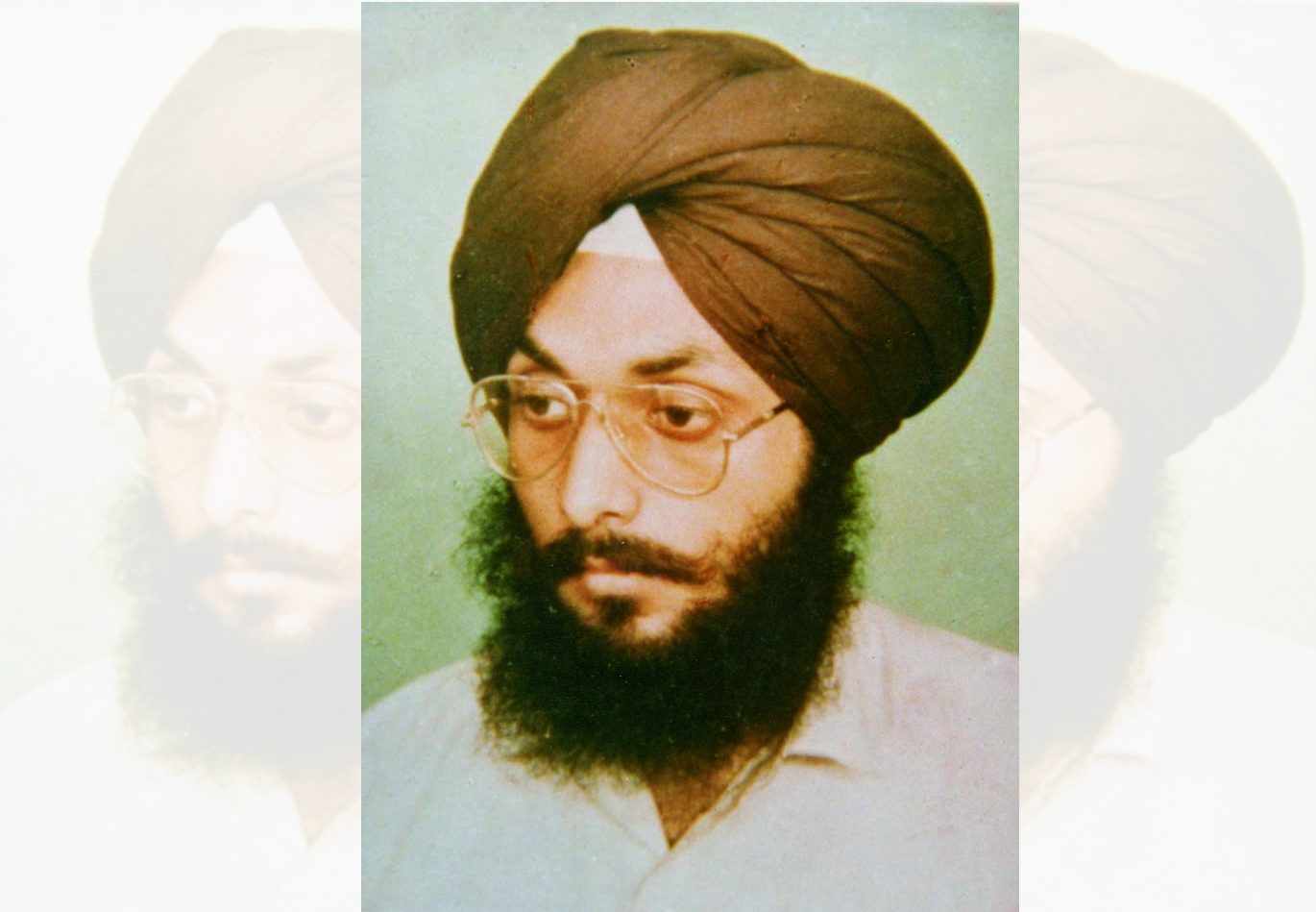

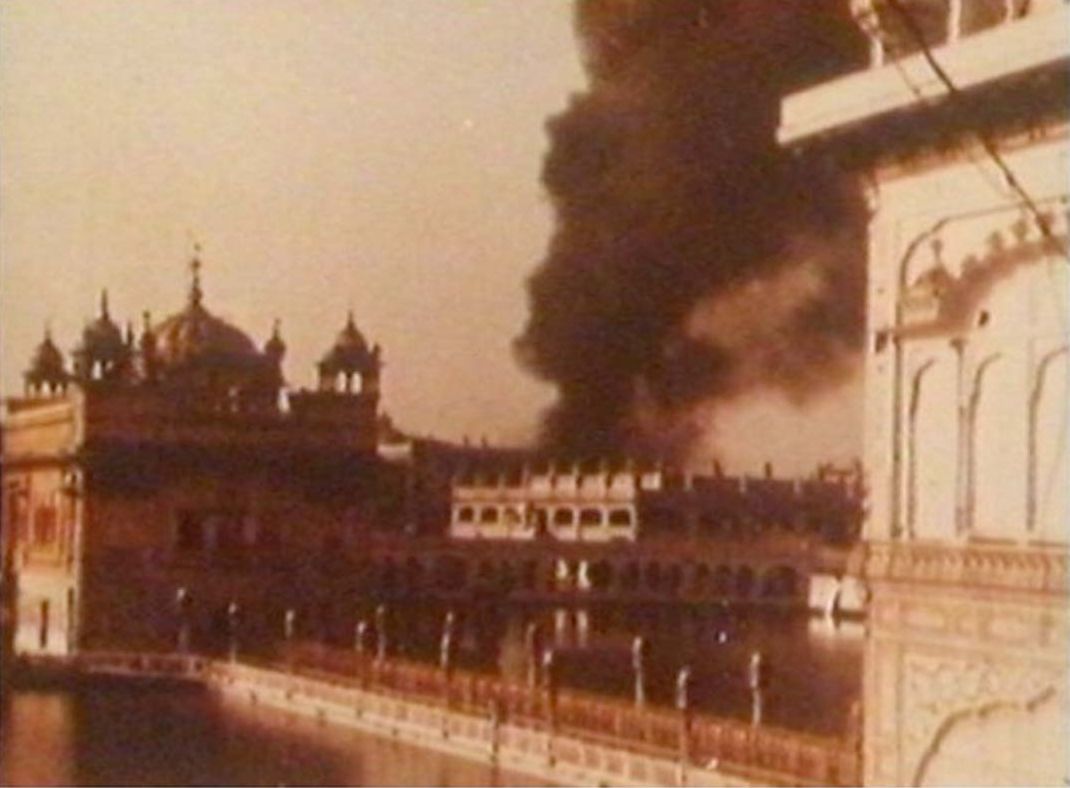
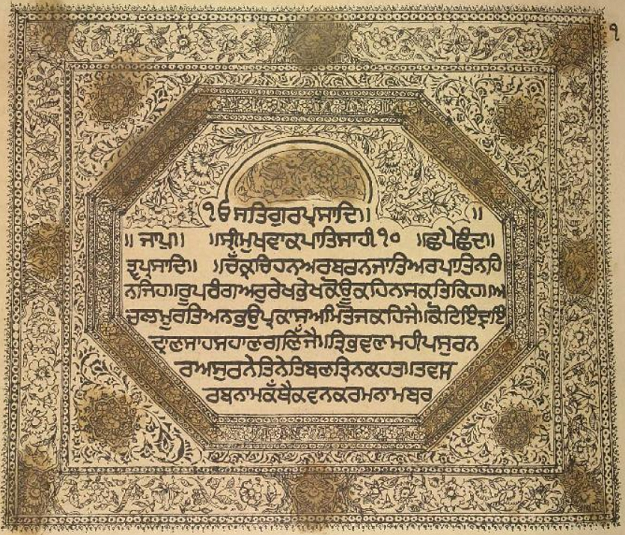
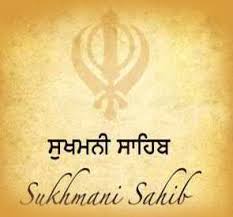
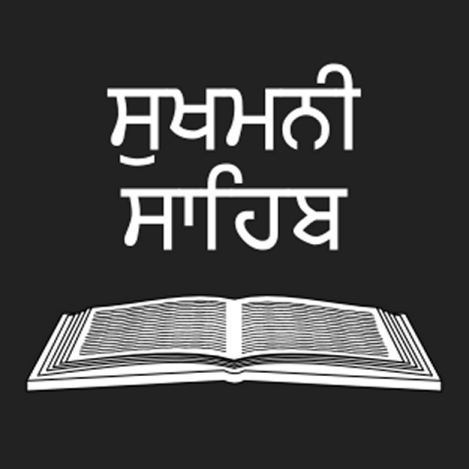
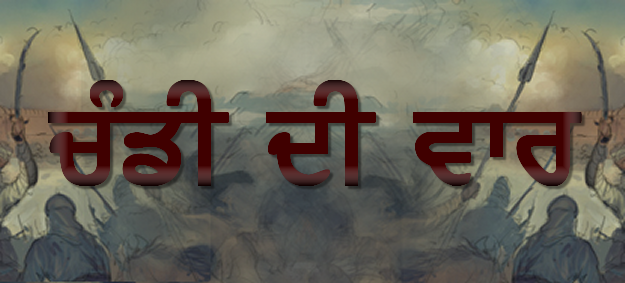
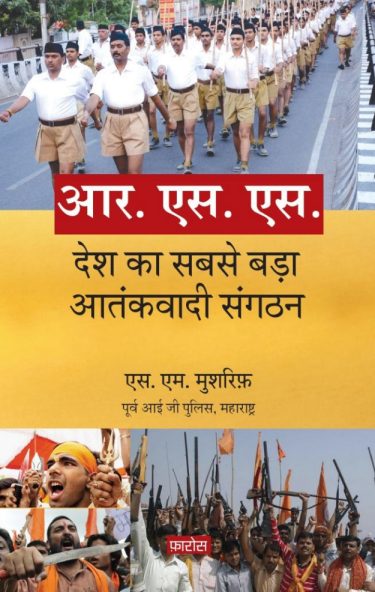
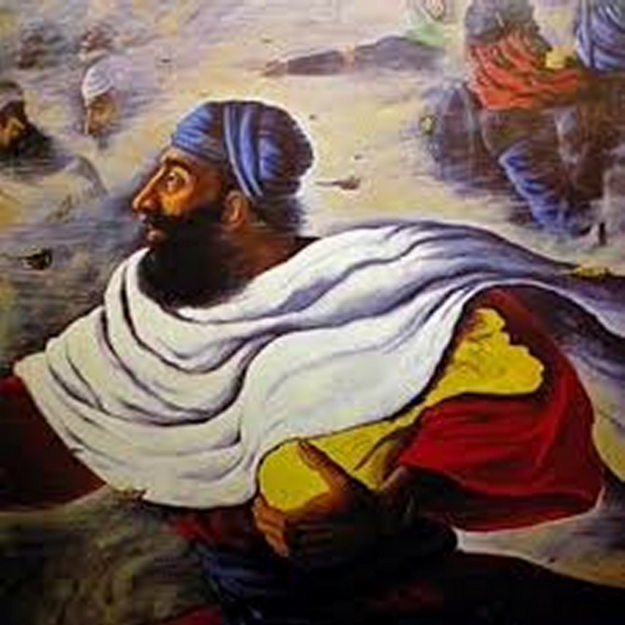
WGJKK! WGJKF!
Wow! What a fantastic and true GurSikh baba Fauja ji Singh was and what a shame about our so called leaders (before & Now).
I heard a friend of Baba Fauja Singh Ji speak recently at a new Khalsa school here in the UK, It was the first time I had heard of this, (this is a shame in itself), on hearing the full story, which was in more detail than this article, The whole sangat there was very moved.
Unfortunately most so called Sikhs, don't even need an enemy nowdays, they are happy to cut their own hair, and do not care at all for their history.
I hope Gurji will give me and other sikhs the courage and strength to follow in these giant foot steps of great GurSikhs such as Baba Fauji Singh Ji.
Gurfateh